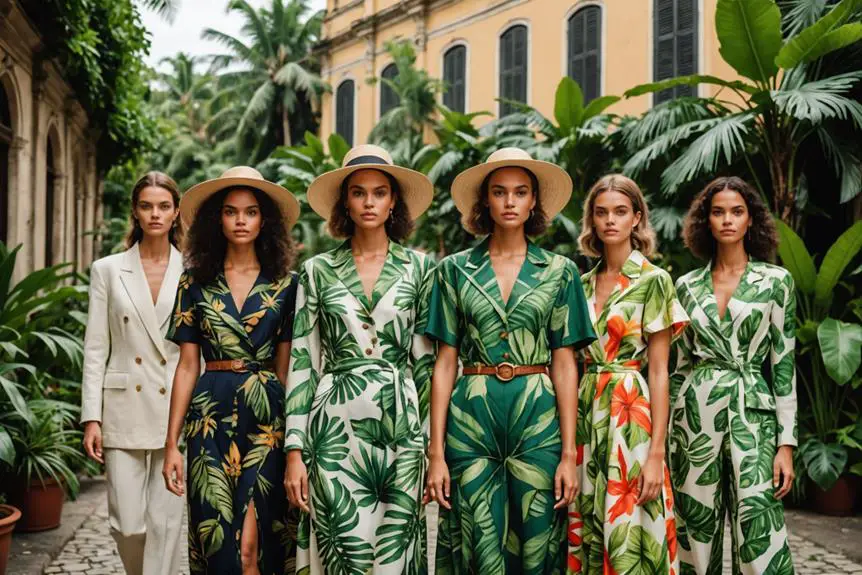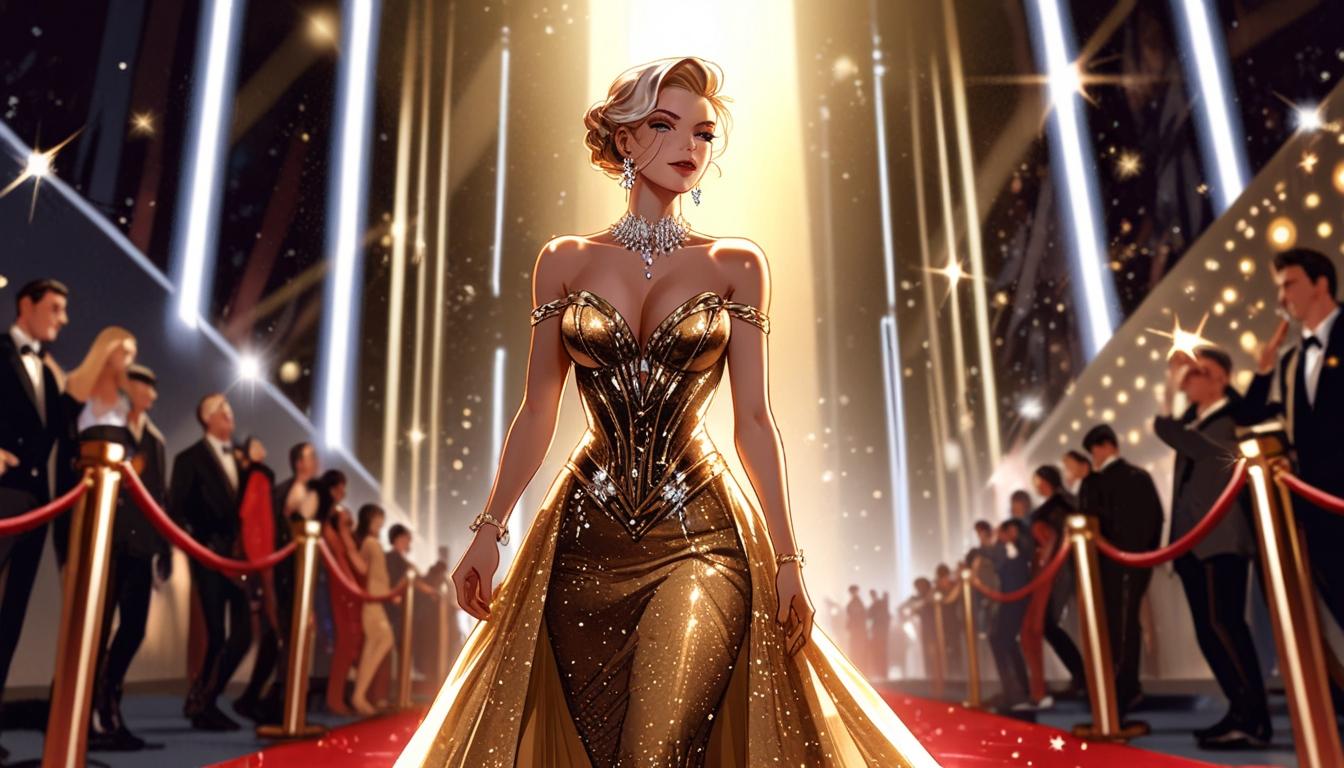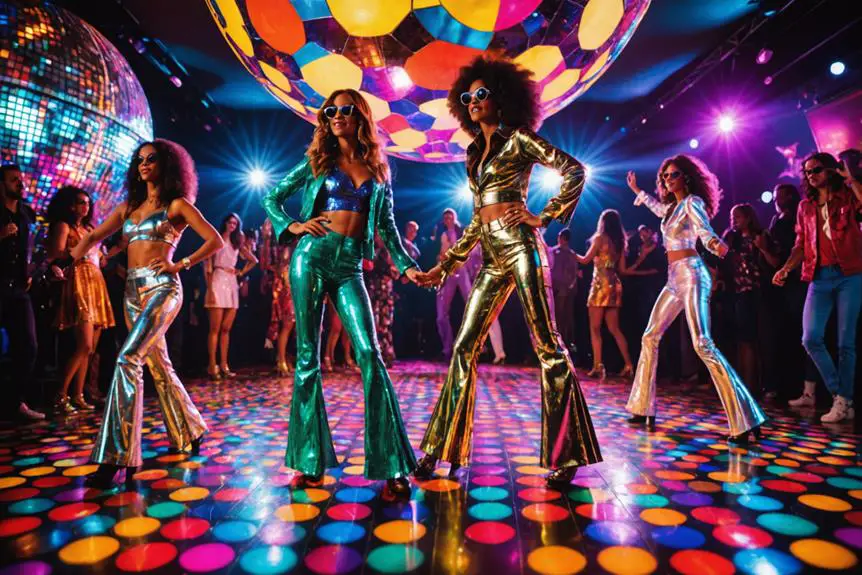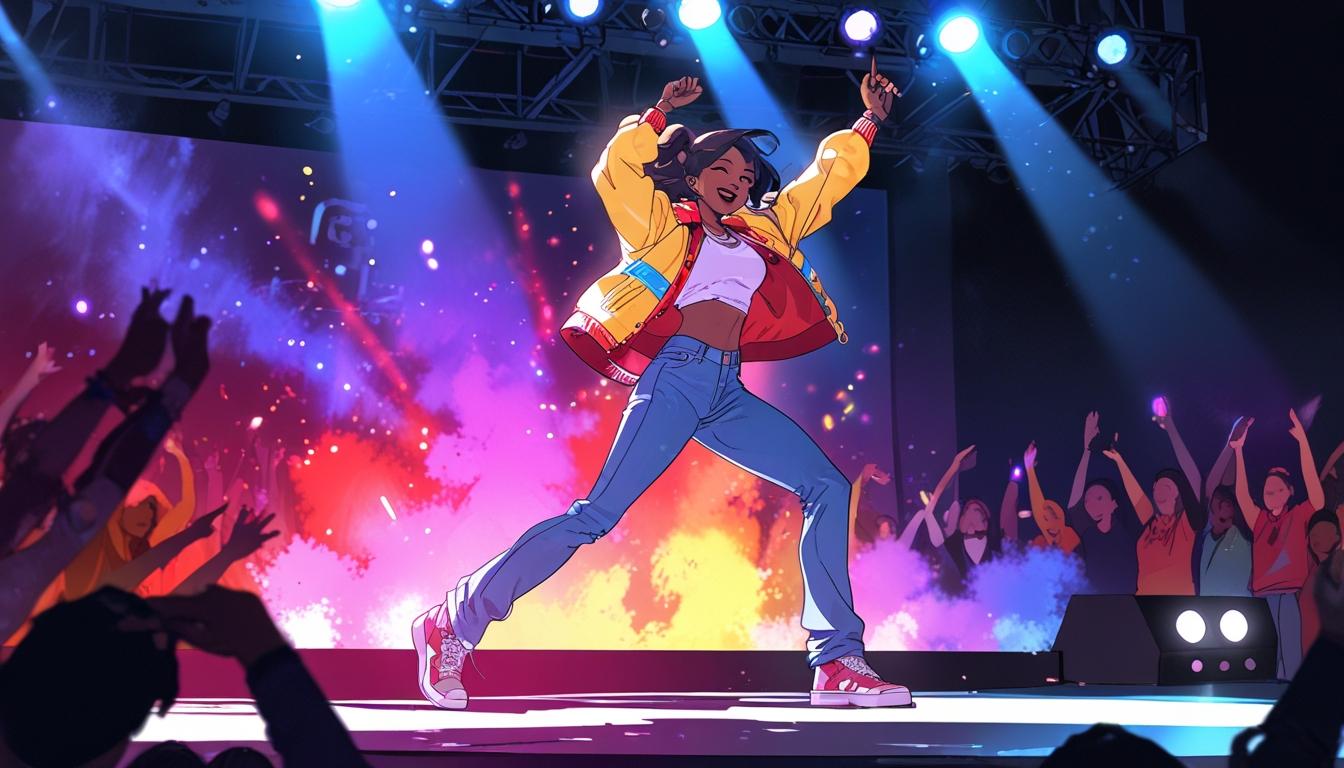Like the timeless elegance of a well-tailored suit, the history of Brazil's oldest fashion brands reveals a tapestry of cultural influences and innovation. You might be surprised to learn that Hering, founded in 1880, set the stage for a dynamic fashion scene that still thrives today. But what about the brands that followed, like Melissa and Ellus? Each of these labels has woven its own unique narrative into the fabric of Brazilian style. As you explore their legacies, you'll discover how these pioneers continue to shape contemporary trends in unexpected ways.
Historical Overview of Brazilian Fashion
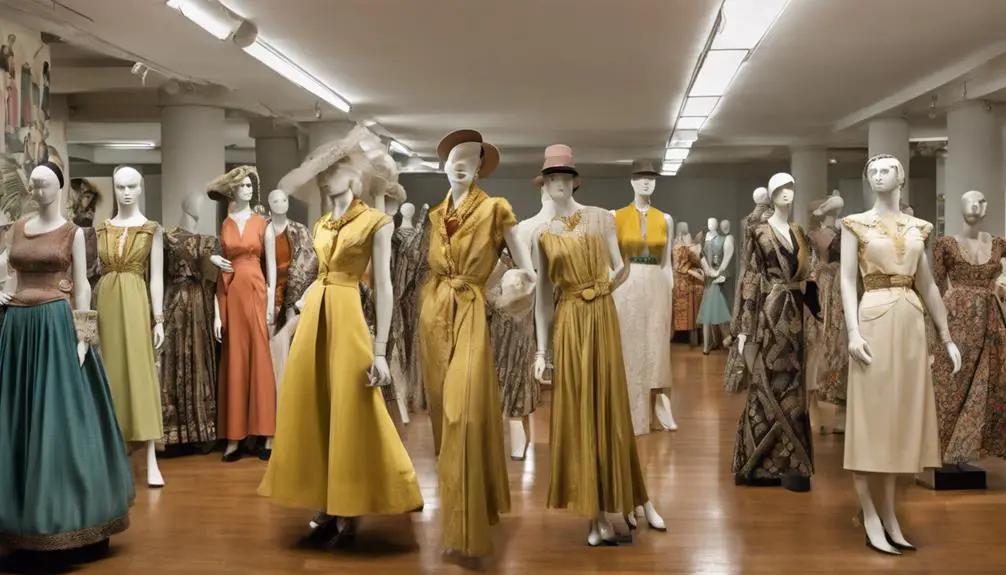
The evolution of Brazilian fashion reveals a rich tapestry of cultural influences and innovative designs. You might be surprised to learn that the oldest Brazilian fashion brand, Hering, was founded way back in 1880 by German immigrant brothers. Known for its basic yet comfortable clothing options, Hering laid the groundwork for a vibrant fashion scene in Brazil.
Fast-forward to the 1970s, and you'll encounter Ellus, one of Brazil's oldest and most expensive fashion labels, specializing in perfect-fitting jeans and keeping pace with evolving trends.
In 1981, Forum emerged as a stylish contender, recognized for its fashionable night dresses and high-quality denims, further shaping the landscape of Brazilian fashion history. The late '80s marked the arrival of Osklen, which initially began as a sports-themed line but has since transformed into a luxury fashion brand that emphasizes eco-friendly materials. This commitment to sustainability makes Osklen a standout in the industry.
Don't forget about Melissa, founded in 1979, which has made waves with its iconic plastic shoes. The brand has collaborated with renowned global designers, showcasing the creativity of Brazilian designers on the international stage.
This historical overview of Brazilian fashion illustrates how these pioneering brands have shaped the industry, blending comfort, style, and innovation while reflecting the diverse cultural influences that define Brazil. Each brand tells a unique story, and their contributions continue to inspire future generations of fashion enthusiasts and creators alike.
Iconic Brands and Their Legacy
Brazilian fashion's iconic brands have left an indelible mark on the industry, each contributing a unique legacy that reflects the country's diverse culture.
Take Hering, for instance, founded in 1880; it's one of Brazil's oldest clothing brands and has become a household name with over 700 stores nationwide. Its focus on basic, comfortable clothing appeals to all genders, emphasizing inclusivity in the fashion scene.
Then there's Ellus, established in 1972, which has carved out a reputation for high-quality jeans. This brand consistently stands out at São Paulo Fashion Week, flaunting its place among Brazil's most prestigious labels.
Forum, launched in 1981, pioneered men's stretch jeans and stylish night dresses, evolving from a women's-focused brand to a versatile clothing brand for all.
Don't overlook Melissa, known for its iconic plastic shoes since 1979. With collaborations from renowned designers and artists, it has solidified its status as a Brazilian fashion staple.
Finally, Colcci, founded in 2000, reflects a high-end aesthetic influenced by street styles and hip hop. Its international reach across 31 countries showcases its evolving legacy in the global market.
Together, these iconic brands embody the spirit of Brazilian fashion, blending innovation with tradition. Their contributions not only shape the fashion scene but also inspire future generations of designers and fashion enthusiasts, ensuring that their legacies endure for years to come.
Evolution of Fashion Retail in Brazil
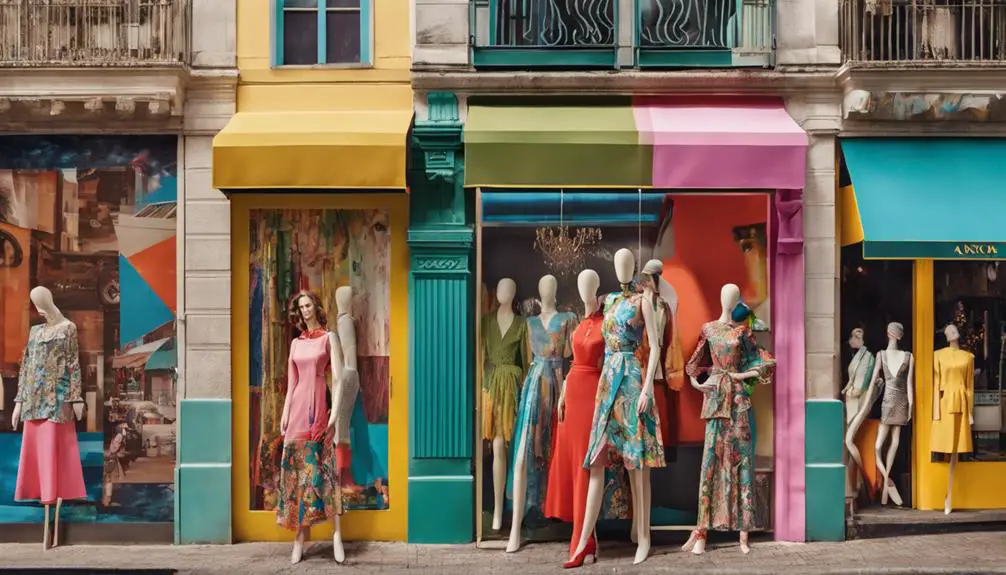
How has fashion retail in Brazil transformed over the decades? The evolution of this vibrant sector reflects a dynamic interplay of history, culture, and market demands. It all began with the launch of Hering in 1880, a pioneering Brazilian brand that carved out a niche in casual daywear. The first Hering store, opened in 1993, marked a pivotal moment, fueling significant growth in fashion retail. Today, Hering boasts 827 stores worldwide across various formats, showcasing the brand's enduring appeal.
As you look back, you'll notice that major players like Renner and Riachuelo emerged in the 1960s and 1980s, respectively. These retailers revolutionized accessibility, ensuring that fashion responded swiftly to market trends. They've made it easier than ever for consumers to find stylish, affordable options.
Meanwhile, the expansion of brands like PUC and Dzarm reflects the diversity within Brazil's fashion retail landscape, catering to children's clothing and streetwear preferences.
Profit trends in the Brazilian fashion retail sector have consistently been robust. For instance, Hering reported an impressive R$ 212 million in profit in 2010, underscoring the brand's market presence and attracting investor interest.
With such strong growth and adaptability, Brazil's fashion retail scene continues to thrive, embracing new styles and innovations while staying true to its cultural roots. Fundamentally, the journey of fashion retail in Brazil is an illustration of resilience, creativity, and a deep understanding of consumer desires.
Cultural Influences on Fashion
Amidst Brazil's vibrant tapestry of culture, fashion emerges as a powerful reflection of its diverse heritage. Brazilian fashion intertwines elements from Indigenous, African, and Portuguese roots, creating a unique aesthetic that tells a story. As you explore this dynamic landscape, you'll notice how cultural heritage plays a significant role in shaping styles that resonate with the people and their identities.
Contemporary fashion brands are breaking away from Euro-centric narratives, embracing inclusivity and regional representation. They're challenging stereotypes, moving beyond iconic figures like Carmen Miranda, to celebrate the rich variety of Brazilian identities. Brands like Estileras and Fudida Silk showcase the beauty of Brazil's native flora and fauna, drawing inspiration from local craftsmanship to craft innovative designs that reflect the nation's essence.
Moreover, the engagement of fashion collectives with community and societal issues enhances the narrative of Brazilian fashion. These collectives emphasize collective identities, showcasing how local craftsmanship can tell stories of resilience and creativity. By prioritizing inclusivity and representation, Brazilian designers not only honor their cultural heritage but also pave the way for a future where fashion is a true reflection of the people it serves.
In a world that often overlooks the importance of origin, Brazilian fashion stands as a demonstration to the strength of its cultural influences, inviting everyone to appreciate the vibrant narratives woven into every garment.
You're encouraged to embrace this journey, where each piece of clothing holds a story worth sharing.
Impact of Brazilian Brands Globally
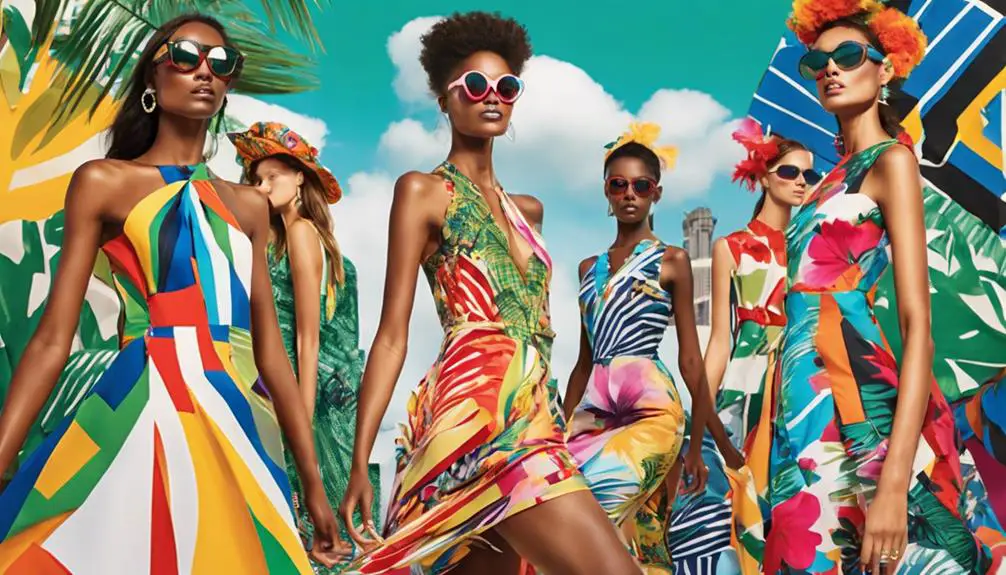
The influence of Brazilian brands on the global fashion scene is undeniable, as they bring unique styles and cultural narratives to a broader audience. From Havaianas flip-flops, which have captured hearts worldwide and can be found in over 100 countries, to the stunning designs of high-end brands like Colcci, Brazil and the world are increasingly intertwined in fashion.
With nearly 50% of its parent company's revenue stemming from Havaianas, this iconic footwear symbolizes Brazilian flair on an international scale.
Fashion designer Oskar Metsavaht and his brand Osklen showcase the intersection of luxury and sustainability, making waves at major events like São Paulo Fashion Week and New York Fashion Week. This commitment not only highlights Brazilian culture but also positions the country as a leader in eco-friendly fashion.
Brands like Hering and Ellus further solidify Brazil's impact, with Hering operating 617 stores and being a trendsetter locally, while Ellus is known for its high-quality denim and international distribution.
The collaboration between Colcci and supermodel Gisele Bündchen has also catapulted Brazilian fashion into the global spotlight, merging celebrity influence with stylish designs.
Frequently Asked Questions
What Is the Oldest Famous Fashion Brand?
Have you ever wondered which vintage fashion brand stands the test of time? Iconic designs and brand history shape fashion evolution, influencing luxury markets while reflecting cultural influences throughout the years. It's a fascinating journey!
What Is the Most Popular Clothing Brand in Brazil?
When exploring Brazil's most popular clothing brand, you'll find Hering stands out. Embracing sustainable fashion and seasonal trends, it combines cultural influences with luxury streetwear's appeal, while enhancing online shopping experiences for fashion icons and everyday consumers alike.
What Is the Biggest Brazilian Brand?
When it comes to the biggest Brazilian brand, you're looking at a legacy steeped in luxury fashion. With brand heritage, cultural influence, sustainable practices, and global expansion, it's truly riding the wave of market trends.
What Are Some Traditional Brazilian Clothing?
You'll find traditional Brazilian clothing showcases vibrant textiles, reflecting cultural significance and regional variations. Festival attire, like the baiana dress, highlights fashion evolution and artisan craftsmanship, celebrating the rich heritage woven into each garment.
